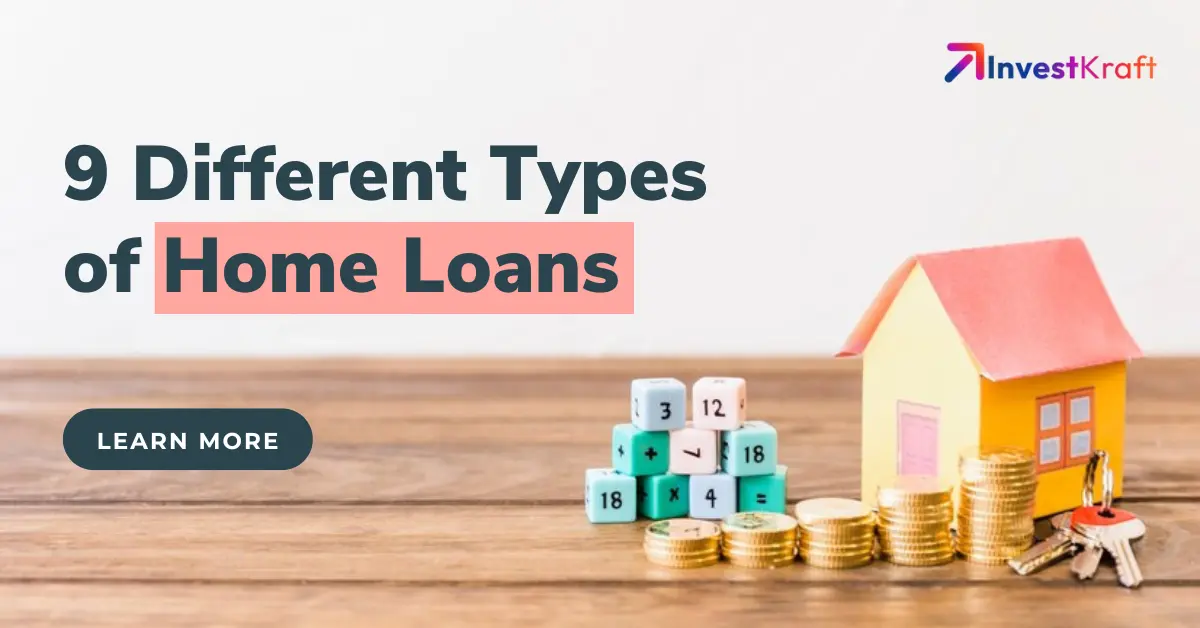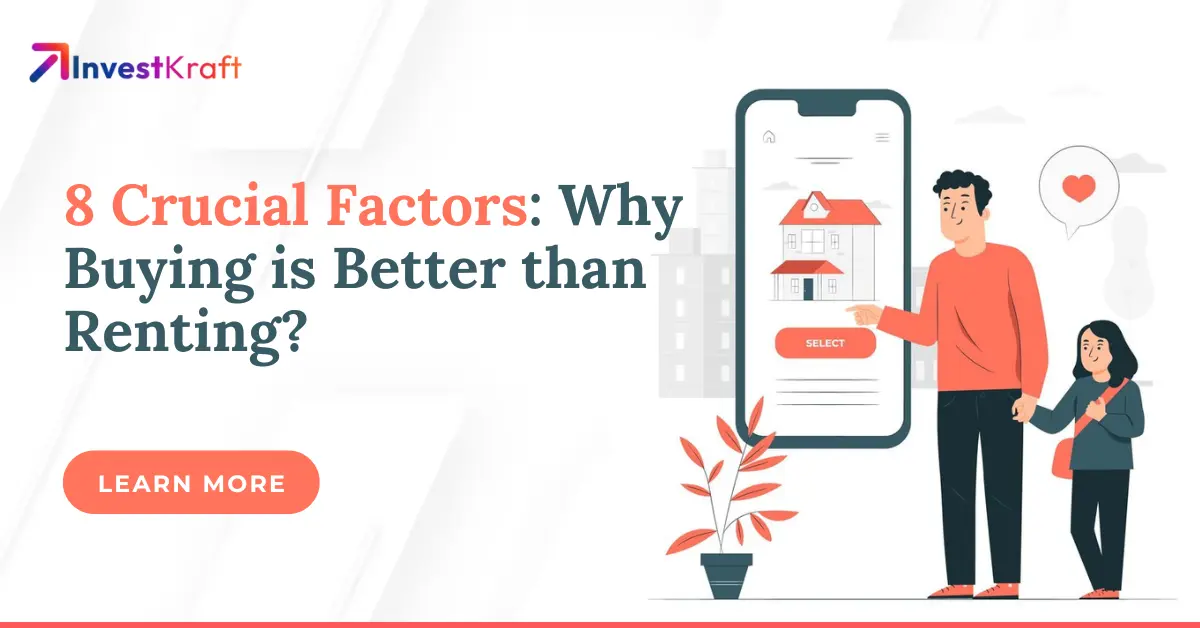A Comprehensive Guide to Buying a House with a Home Loan 2024

Buying a house is a monumental achievement that demands meticulous preparation, thorough investigation and financial prudence. In 2024, the real estate market in India offers a vibrant and ever-changing landscape for prospective homeowners. This comprehensive guide equips you with the necessary tools to navigate the real estate market trends in 2024, tackle legal complexities and explore financing alternatives. With this ultimate roadmap, you will be well prepared to make an informed decision when purchasing a house in India this year.
What is a Home Loan?
A home loan refers to an amount that is borrowed by a property owner from lending institutions like banks to pay the cost of the property he purchased. This borrowed amount needs to be repaid in the form of Equated Monthly Instalments (EMIs) over a tenure. A home loan carries a specific interest that is negotiated between the borrower and lender at the time of final loan sanction. All the home loans provided by banks and other financial institutions come under the purview of the Reserve Bank of India, which has laid out some guidelines related to home loans.
Below are the latest guidelines set up by RBI for home loans in 2024.
1. Repo Rate:
The Reserve Bank of India (RBI) has set the repo rate at 6.5% as of 8th February 2024, which indicates that there have been no changes in the repo rate since 8th February 2023. The unchanged repo rate is good news for buyers as it allows them to take advantage of favourable real estate pricing. The MPC (Monetary Policy Committee) last increased the repo rate in February 2023 by 25 basis points bringing the rate to 6.50%. Consumer activity in the housing market remains strong, in line with the overall economic status. In the new quarter, the RBI’s decision to keep interest rates steady will play a crucial role in driving growth in the residential sector.
The repo rate has a straight impact on a home loan interest rate. When RBI lowers the repo rate, the borrowing cost goes down and a loan taker can seek to benefit from it.
2. Loan To Value (LTV) Ratio:
LTV ratio is the measurement of lending menace by various financial organizations like banks and NBFCs before offering a home loan proposal to a borrower.
To help people buy property by making home loans more affordable, RBI has surged the Loan to Value Ratio up to 90% if the total home loan value is under Rs. 30 lakhs. In addition, the home loan LTV ratio is beyond Rs. 75 lakhs is 75%. Hence, the higher the LTV ratio, the easier it would be to purchase a property by seeking finance through a home loan.
3. Prepayment Charges:
The maximum loan value and tenure for a home loan can be Rs. 1 crore and 30 years. If a person pays off his home loan in parts or whole before the end of the loan tenure, he can choose to save money. This is simply by depositing a bulk amount towards your home loan account. Hence, the RBI has eliminated the prepayment charges in cases of fluctuating interest rates and maintained the penalty at 3% in cases of fixed interest rates to help loan borrowers who decide to prepay their loans. Earlier, the prepayment charges for a home loan were up to 5% of the loan balance.
4. Balance Transfer:
For those borrowers who want to refinance their home loan, it is necessary to know that the Reserve Bank of India has eliminated the foreclosure charges. Home loan takers can transfer their existing home loan to a different bank offering lower interest rates. So, during the transfer of an existing home loan, the borrower won’t have to make any foreclosure payment.
You may also like: Top 10 Non-Banking Financial Companies (NBFCs) in India in 2024
8 Types of Home Loans Available in India in 2024
Lenders provide home loans for a range of purposes, not just for purchasing a house. There are various types of home loans offered in the financial market. Let us explore some popular options available for potential borrowers.
- Land Purchase Loan: Many banks provide loans specifically to purchase land. This option allows buyers to save money and build a house at a later time or simply hold onto the land as an investment. Lenders typically offer up to 85% of the cost of the land as a loan.
- Home Purchase Loan: The most common type of home loan is for purchasing either a new or a pre-owned home and it’s widely available from various banks in different forms. The interest rate can be either fixed or floating, typically falling between 9.85% and 11.25% and many banks offer up to 85% of the total amount as a loan.
- Home Construction Loan: This loan is specifically designed for those who prefer to build their place instead of buying an already constructed house. The approval process for this loan type considers the cost of the plot as well. To be eligible for the loan, the plot must have been purchased within a year to include the plot cost in the loan amount. The loan amount is determined based on an estimated construction cost and can be disbursed in one go or multiple instalments.
- House Extension/Expansion Loans: Some banks also offer loans for home expansion, including alterations to the current structure and the construction of new rooms.
- Home Improvement Loans: If you do not have the funds for renovation and repair works for your house, you can consider applying for a specialized home improvement loan from a bank. These loans can help you cover the expenses for external and internal repair, electrical renovation, construction of overhead water tank and painting. The loan will allow you to enhance the appearance and functionality of your home.
- Home Loan Balance Transfer: Allows individuals to move their home loan from one bank to another to take advantage of lower interest rates or better services. By doing so, they can repay the remaining loan at a revised, lower interest rate offered by the new lender.
- Home Loans for NRIs: NRI home loans are tailored to assist non-resident Indians in purchasing residential properties in India and have distinct formalities and application procedures compared to other types of loans. These loans are typically offered by both public sector and private sector banks as part of their housing loan portfolio.
- Bridged Loans: Bridged loans are a useful option for existing homeowners who want to buy a new property before selling their current one. It allows borrowers to secure funds for the new purchase while they look for a buyer for their existing property. Typically, these loans involve mortgaging the new property with the bank and are usually for less than 2 years.
You may also like: 10 Factors To Consider While Choosing Home Loan Balance Transfer
Things To Do While Applying For A Home Loan in 2024
Before taking out a home loan or finalizing a property, it is important to review a checklist of considerations. Home loans offer the benefit of making a down payment and spreading the liability of paying for the home over a lengthy period. By evaluating this checklist, you can ensure that you are making an informed decision that is aligned with your financial goals.
- Compare Different Home Loan Proposals – A smart property buyer is one who never relies on one source of funds. Ideally, one should get home loan proposals from different banks and NBFCs. In today’s times, people can search for the best home loan rates and apply for the same online. This is quite faster and simpler for people. Moreover, it also helps them compare different home loans being offered to them in terms of foreclosure charges, balance transfer facility, monthly instalments amount, loan amount, etc. Choose the one that seems more affordable to you.
- Tenure – while seeking to get a home loan, the tenure of the loan is one aspect that can’t be overlooked. This is because it has a direct impact on the loan instalment. Ideally, one should go with a shorter loan tenure as it would lower the total interest one would pay towards the home loan. However, if you don’t have any issue in paying instalments for a longer term, you can go for a home loan with a longer repayment tenure.
- Credit Score – The credit score indicates the loan repayment capability of a person. This score ranges between 300 and 900. The closer it is to 900, the more the chances of getting your home loan approved. Ideally, a credit score of 750 or above is considered excellent to get attractive home loan interest rates. So, before applying for a home loan, check your credit score and negotiate with the lenders.
- Down Payment – Down payment refers to the upfront amount a borrower pays from his pocket to purchase the property. He can pay the remaining amount through a home loan. Usually, most properties need at least 10% as a down payment. Always remember that the more the down payment, the lesser will be the loan amount.
- Processing Charges - Every home loan borrower is supposed to pay this amount to the lender towards the processing of the application. Most banks and NBFCs levy a processing charge of up to 2% of the loan amount + GST. The processing cost typically differs from one lender to another. To control any additional burden, you must be on the lookout for the bank charging a nominal processing charge.
- Documents – Since the home loan process is quite extensive, it is necessary to be aware of all the documents needed for a home loan application and its processing. From income documents to identity proofs, and income tax returns, arrange for all the required documents in advance to avoid any further hassle.
Importance of Home Loans in the Current Economic Landscape
Home loans are a vital component of real estate development in India, fueling the construction of residential and commercial properties that shape the country’s infrastructure. This funding mechanism plays a crucial role in the growth of cities and towns, enabling the creation of sprawling residential complexes and towering commercial spaces. By exploring the role of home loans in real estate development, we can understand their significant contribution to the built environment in India.
1. Creating jobs and generating income in construction:
Affordable housing initiatives play a crucial role in boosting the construction industry by generating a significant increase in construction activities and providing new job opportunities. The development of affordable housing projects not only addresses the housing needs of the community but also contributes to economic growth by stimulating construction-related employment.
Recent reports indicate that the Indian construction sector has a significant workforce, with over 5 crore people employed. The demand for labour and skilled workers in this industry directly influences job opportunities and income generation, especially for those who lack training or have only basic skills. Consequently, this contributes to poverty alleviation and provides a boost to local economies.
2. Consumer spending rise boosts the economy:
Access to affordable housing boosts consumer spending and the economy as a whole. People can allocate more of their income to other needs and goals, which in turn stimulates spending in sectors like entertainment, services and retail. The positive impact of affordable housing goes beyond the housing sector, with increased demand and business opportunities spreading to related industries.
3. Better health, more productivity:
Access to secure and affordable housing is essential for individuals’ health and well-being. It improves living conditions, reduces overcrowding and provides stability leading to better health outcomes. Affordable housing also decreases stress levels and ensures access to basic amenities like clean water and sanitation. Better health directly impacts productivity, enabling individuals to participate in the workforce, pursue education and contribute to economic activities.
The Conclusion
A home loan is a major component of the home buying process as most property buyers choose to take a home to finance this purchase. Therefore, it becomes necessary for them to acquaint themselves with the entire home loan process, and its elements before making a home loan application. At Investkraft, we help people understand home loans better and get them the best deal on home loans. Contact us today to know more.
Verify Phone Number
Related Post

A Comprehensive Guide to Home Loan Eligibility for Salaried Individuals in 2024
When purchasing a new home, the costs involved can be quite high, necessitating the need for a home...
Read more...
Top 10 Best Banks for Home Loans in 2024
Looking to buy your first home? The process can be thrilling, tiring and a bit scary, especially in...
Read more...
10 Factors To Consider While Choosing Home Loan Balance Transfer
We have different needs and financial requirements in life for which we often apply for loans. Among...
Read more...
Home Loan Balance Transfer: Your Complete Guide to Saving on Interest Rates
Are you feeling the weight of your home loan stretching out over the years? Whether you're alrea...
Read more...
Role of Credit History in Home Loan Approval and Interest Rates
A house-buying endeavor requires a significant investment from the lender as well as the buyer. As a...
Read more...
9 Different Types of Home Loans Available in India 2024
Everyone wants to own a home at some point in their lives. Everyone aspires to own a home since it i...
Read more...
10 Tips for First-time Home Buyers in India 2024
Buying a home is not just one of the biggest but also complex decisions in one’s life. This is...
Read more...
7 Major Benefits of Closing A Home Loan Early
Lenders have ceased to charge foreclosure fees to clients with house loans that contain variable int...
Read more...
Top 5 Home Loan Benefits for Women in India 2024
For many of us, purchasing a home is an emotional and once-in-a-lifetime choice. We borrow money, sp...
Read more...
8 Big Reasons Why It Is Good to Buy a Home Rather Than Renting It
Do you find it difficult to decide between renting and owning a home? Nearly everyone finds it diffi...
Read more...Reach out to our Experts if you have any Doubts
Like the best things in life, Consultations @InvestKraft are free
Drop a Mail or give us a Missed Call & Begin your Investment Journey here



